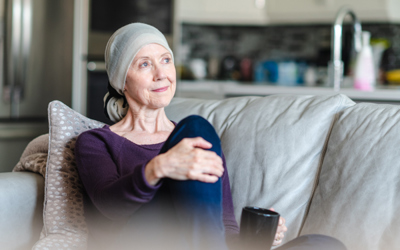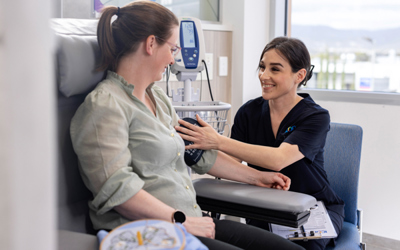Quick facts about stomach cancer
There are around 6,600 new stomach cancer cases in the UK every year. Stomach cancer is the 18th most common cancer in the UK, accounting for 2% of all new cancer cases
There are many different kinds of stomach cancer, however the most common type is adenocarcinoma. This usually develops slowly over several years in the inner lining of the stomach, called the mucosa.
Types of stomach cancer
There are many different kinds of stomach cancer, however the most common type is adenocarcinoma. This usually develops slowly over several years in the inner lining of the stomach, called the mucosa.
Signs and symptoms of stomach cancer
As signs and symptoms for stomach cancer can be similar to other common conditions, it’s important to see your GP or healthcare professional if you experience any of the symptoms below. Discussing anything concerning with your doctor as soon as possible can help give you peace of mind and offer the best chance of successful treatment if you receive a stomach cancer diagnosis.
Stomach cancer can be difficult to detect as it may not cause any symptoms in its early stages. As the disease progresses, symptoms can include:

Pain and discomfort in the abdomen

Heartburn or indigestion (dyspepsia)

Gastrointestinal bleeding which may appear in vomit or bowel motions

Frequent vomiting

Appetite loss

Rapid weight loss

Swelling of the abdomen
Stages of stomach cancer
The TNM system is used to stage stomach cancer, and it helps doctors understand what your cancer looks like. The TNM stands for:
Tumour (T) – Describes the size of the tumour and the extent the cancer has spread. The tumour can be graded from T1 (describing a tumour 5 cm or less) to T2 (greater than 5 cm)
Nodes (N) – Describes whether the tumour has spread to nearby lymph nodes. Nodes can be graded from N0, where there has been no spread, through to N1, where the cancer has spread the lymph nodes
Metastasis (M) – Describes whether the cancer has spread to other areas of the body. Metastasis can be graded from M0, where there has been no spread through to M1, where the cancer has spread to other organs of the body and produced additional tumours
The TNM information, along with other tests, helps determine the stage of your stomach cancer using the guidelines below:
-
Stage 0
The cancer is in its earliest stage and is still located in the innermost layer of the stomach wall.
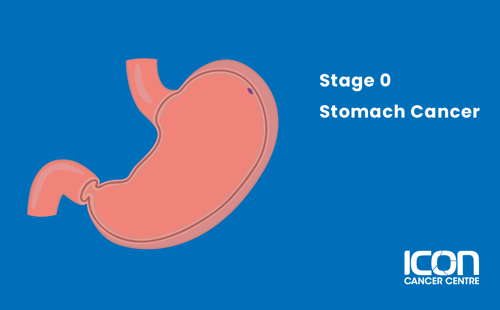
-
Stage IA
The cancer is located in the innermost layer of the stomach wall.
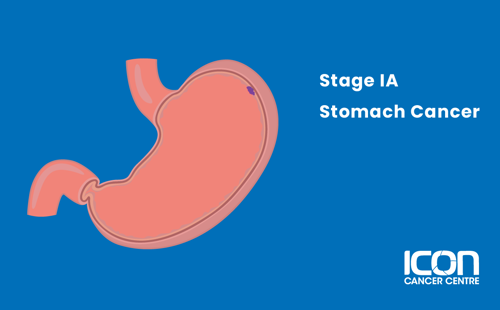
-
Stage IB
The cancer is located in the inner layer of the stomach wall and is found in up to two surrounding lymph nodes. Alternatively, the cancer has spread through to the muscularis layer of the stomach wall.
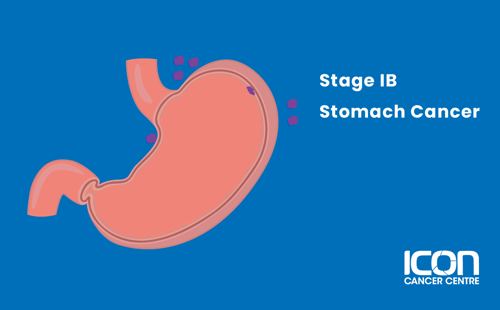
-
Stage II
The cancer has spread through the inner layer of the stomach wall and is found in up to 15 surrounding lymph nodes or has spread to the muscularis layer and is found in up to six surrounding lymph nodes. Alternatively, the cancer has spread to the serosal layer but no to the lymph nodes.

-
Stage IIIA
The cancer has spread to the muscularis layer and is found in seven to 15 lymph nodes near the tumour. Alternatively, the cancer has spread to the serosal layer of the stomach wall, is found in up to six lymph nodes near the tumour and has spread to nearby organs.

-
Stage IIIB
The cancer has spread to the outermost layer of the stomach wall and is found in up to six lymph nodes near the tumour. Alternatively, the tumour is in the inner layer of the stomach wall and has involved up to 15 lymph nodes near the tumour.
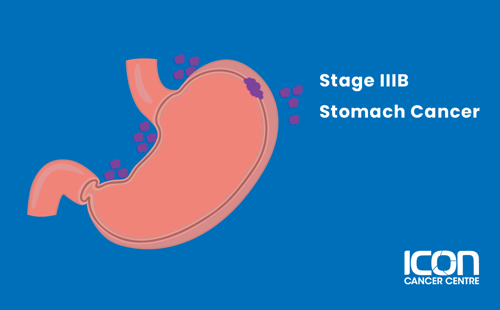
-
Stage IIIC
The cancer has spread to the outermost layer of the stomach and involves up to 16 lymph nodes.
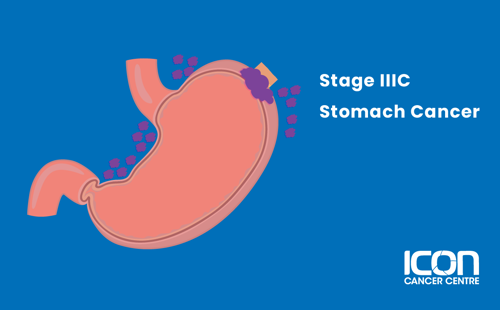
-
Stage IV
The cancer has spread to distant organs of the body including liver, lungs, brain or bone.
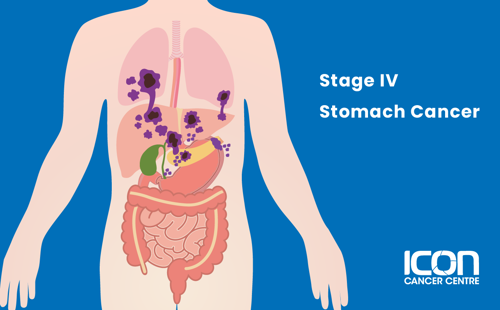
Treatment for stomach cancer
There are many different types of treatment for stomach cancer. Your treatment will depend on you and your cancer.

